American History for Truthdiggers: A Broken Union (1851-1861)
Demands for the outright end of slavery stayed on the fringe as the nation tumbled toward civil war.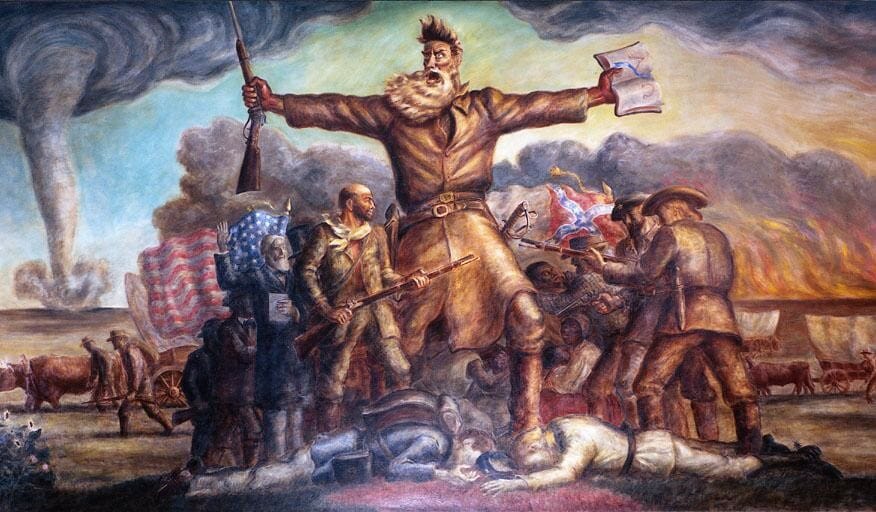 "Tragic Prelude," a circa 1937 work by John Steuart Curry, depicts abolitionist guerrilla fighter John Brown holding a rifle in one bloody hand and a Bible in the other and standing over the bodies of Union and Confederate soldiers. The painting hangs in the Kansas Statehouse in Topeka.
"Tragic Prelude," a circa 1937 work by John Steuart Curry, depicts abolitionist guerrilla fighter John Brown holding a rifle in one bloody hand and a Bible in the other and standing over the bodies of Union and Confederate soldiers. The painting hangs in the Kansas Statehouse in Topeka.
Editor’s note: The past is prologue. The stories we tell about ourselves and our forebears inform the sort of country we think we are and help determine public policy. As our current president promises to “make America great again,” this moment is an appropriate time to reconsider our past, look back at various eras of United States history and re-evaluate America’s origins. When, exactly, were we “great”?
Below is the 16th installment of the “American History for Truthdiggers” series, a pull-no-punches appraisal of our shared, if flawed, past. The author of the series, Danny Sjursen, an active-duty major in the U.S. Army, served military tours in Iraq and Afghanistan and taught the nation’s checkered, often inspiring past when he was an assistant professor of history at West Point. His war experiences, his scholarship, his skill as a writer and his patriotism illuminate these Truthdig posts.
Part 16 of “American History for Truthdiggers.”
See: Part 1; Part 2; Part 3; Part 4; Part 5; Part 6; Part 7; Part 8; Part 9; Part 10; Part 11; Part 12; Part 13; Part 14; Part 15.
* * *
“Shall I tell you what this collision means? They who think that it is accidental, unnecessary, the work of interested or fanatical agitators … mistake the case altogether. It is an irrepressible conflict between opposing and enduring forces, and it means that the United States must and will, sooner or later, become either entirely a slaveholding nation, or entirely a free-labor nation.” —Sen. William Seward of New York (1858)
“It is difficult to achieve a full realization of how Lincoln’s generation stumbled into a ghastly war. … To suppose that the Union could not have been continued or slavery outmoded without the war … is hardly an enlightened assumption. If one questions the term ‘blundering generation,’ let him inquire how many measures of the time he would wish copied or repeated if the period were to be approached with a clean slate and to be lived again.”—Historian J.G. Randall (1940)
The debate may never end. Was the coming of the American Civil War the result of some irrepressible conflict between North and South, or the result of a blundering generation of politicians? In other words, was the Civil War inevitable, or could it have been avoided? This historian, trained to eschew absolutes such an “inevitability,” still understands the pull of an “irrepressible conflict” argument. After all, slavery and its expansion had dominated much political debate ever since the Missouri Compromise of 1820. Furthermore, it is hard to imagine the United States remaining half slave and half free indefinitely. Then again, an intersectional two-party system had prevailed for decades and avoided war through compromise after compromise. Besides, truth be told, few Northern whites were actual humanitarians; abolitionists remained but a fringe movement, and most whites above the Mason-Dixon Line were themselves highly racist and unconcerned with black rights. Seen in this light, perhaps war wasn’t preordained.
The only certainty is this: Millions of human decisions—contingent, contextual actions—led this nation into a near suicidal civil war, the largest conflict ever fought in this hemisphere before or since. Americans’ penchant for conspiratorial thinking, concern for their own rights and liberties, and capacity for political tribalism (sound familiar?) made such a bloody conflict possible. Slavery was, undoubtedly, the proximate cause of the divide—the core issue at hand. Nonetheless, it was never so simple as an argument over the ethics or morality of the institution of slavery. The inconvenient truth is that the vast majority of whites—North or South—couldn’t give a hoot about black civil rights in the 1850s. Outright abolitionists were often considered wacky extremists, out on the fringes of American politics. The issues at hand, though they centered on questions of slavery in one way or another, were often about power. Which way of life and labor would triumph in the West? Would slavery expand or slowly wither and die in the contained space of the Old South? Who would dominate the Congress—Northern or Southern, free or slaveholding representatives?
Slavery, indeed, must be understood as America’s “original sin,” a ticking time bomb sneaked into our Constitution for future generations to defuse. And, for many decades, nearly a century, in fact, political leaders succeeded in delaying the explosion through combinations of compromise and collective avoidance. If the fuse hadn’t been finally lit in the 1850s, perhaps it would have a decade or two later; we cannot be sure. What seems apparent, though, is that after the massive conquests by the United States in the Mexican-American War, increasingly bellicose Southern leaders—out of fear of loss of their plantation way of life—pushed too far, too fast, and collapsed the existing two-party system. Then, like a phoenix rising from the ashes, a new Republican Party would form in opposition to the further expansion of slavery. For Southerners this was too much, and they made clear their intention to secede should a Republican win the presidency. Bluffs were called. Neither side flinched. Perhaps a million would die.
A Slave Empire?: The Obsessive Calls to Expand the ‘Peculiar Institution’
Ever since the Age of Jackson (1824-36), the two primary political parties—Andrew Jackson’s own Democrats and the opposition Whigs—were intersectional. In other words, they had Southern and Northern wings. Most arguments centered on banks, tariffs, federal improvements and westward expansion. The “peculiar institution” of slavery was always, no doubt, an important issue, but it rarely tore the parties apart along sectional lines. Northern Democrats would usually side with their slaveholding Southern compatriots, and many Southern Whigs were slave owners themselves. The matter of the Mexican “Cession”—the land conquered from America’s southern neighbor—and what to do with it, would help shatter the intersectional system into increasingly regional political factions. Most Northerners—Whig and Democrat—were uncomfortable with the westward expansion of slavery. They thought such a spread would further empower Southerners in the Senate and compete with free labor in the western territories. Southerners—Whig and Democrat—believed that slavery must “expand or die.” Cotton defined their economic system, and they feared that the slavery on which it depended would, if contained, eventually die or be outlawed by an increasingly populous North.
Each side was scared of the other, but the Southerners were absolutely terrified by the prospect of loss of property, the overturning of their caste system, and racial mixing. That fear drove an obsessive penchant for slave expansion and fed the Northern narrative of Southern despotism. Southern overreach and overreaction led to the formation of a new pro-slavery ideology and a Southern chauvinism unparalleled in American history. Whereas many Founders were themselves slave owners, most believed the institution to be a necessary, temporary evil that would eventually disappear. By the 1850s, a new generation of planters turned this ideology on its head. Slavery, they said, was a necessary good and was superior to the “wage slavery” of Northern factory workers. James Hammond, a South Carolinian and a U.S. senator from 1857 to 1860, famously espoused the sheer power of the American slave South, boasting that “the slaveholding South is now the controlling power of the world. Cotton, rice, tobacco, and naval stores command the world. … No power on earth dares … to make war on cotton. Cotton is king.”
Southerners were so desperate to spread slavery that they took international law into their own hands, raising filibusterer (illegal and unsanctioned) armies to forcibly seize new territory. Many Southerners had long been obsessed with Spanish Cuba and its plentiful slave society. In 1851, William Crittenden, the prominent nephew of the federal attorney general, led some 400 volunteers in an unsuccessful invasion of Cuba. Fifty filibusterers, including Crittenden, were captured and executed in Havana. Furthermore, the line between official and unofficial policy was less than clear. The administration of President Franklin Pierce (1853-57) had long expressed a desire to annex Cuba. In fact, in the wake of Pierce’s election in 1852, young enthusiastic Democrats led torchlight parades while holding banners reading “The Fruits of the Late Democratic Victory—Pierce and Cuba.”
In an even more ambitious series of adventures, William Walker (perhaps the most famous filibusterer of all) sought, unsuccessfully, in 1853 to conquer Baja California and Sonora from Mexico, and then from 1855 to 1860 led several bloody invasions of Nicaragua in Central America. At one point, in spring 1856, with Walker at the helm of a Nicaraguan army that included 2,000—primarily Southern—Americans, the Pierce administration even temporarily granted diplomatic recognition to Walker’s Nicaraguan government. Slavery, of course, had already been abolished in most of Latin America by this time. No matter, Walker soon legalized it again, in September 1856. Walker’s invasion became a cause célèbre for Southerners desperate to increase the number of slave states (and hence slave state senators). One newspaper even proclaimed that “in the name of the white race [Walker] now offers Nicaragua to you and your slaves, at a time when you have not a friend on the face of the earth.” By 1860, though, Walker’s luck had run out, and he was executed by a Honduran firing squad.
Pierce, though not himself a slaveholder, appeared to be totally controlled by the pro-slave South and capable of colluding with wild, illegal adventurers. Northerners in both major political parties were appalled by what they saw as madness—a veritable obsession to add more slave states to the union. Northern Democrats faltered, Southern Whigs stood by their region, and the two-party system of old bent. And later, as official U.S. government policy began to appear to be under the control of the “Slave Power,” the system would break once and for all.
The ‘Slave Power’ Conspiracy: Truth and Fiction
Each side, North and South, was by the 1850s convinced that the other was out to suppress its way of life and trample on its liberty. “Free Soil” Northerners—those who wished to avoid the expansion of slavery and its damage to their own free labor—believed that a Slave Power sought to dominate the federal government. In this line of thinking, influential Southern aristocratic slaveholders wished to expand their slave labor system into the new western territories and even into the North itself, where the institution would compete with the small farming and wage labor system that provided most Northerners’ very livelihood. The minority Slave Power, it was believed, would accomplish this through domination of all three branches of the federal government—the courts, the legislature and the presidency—and impose its will on the nation’s Northern majority.
At the same time, Southerners, whether slaveholding or not, seemed to sincerely believe the polar opposite: that “black Republicans” were out to immediately abolish slavery, seize their chattel property and impose racial equality and mixing on Southern society. Poor whites, most of whom had not a single slave, feared the latter as much as the largest plantation owners. After all, their white skin was a badge of honor in a racial caste system and gave them a leg up in highly stratified Southern society. Firebrands on either side whipped up their followers and encouraged highly conspiratorial thinking—this being, perhaps, a highly American propensity then and now.
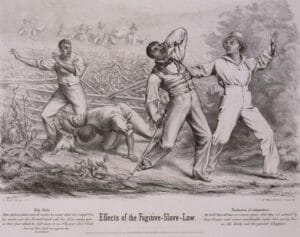
To the Northerners, it appeared that each of the separate branches of federal power, one by one, had fallen under the sway of the Slave Power. It began with Congress. In 1850, a Democratic coalition pushed through the Fugitive Slave Act, requiring Northern authorities to turn over runaways to Southern slave owners. The irony of this struck deeply for Northerners, especially Whigs. For three decades or more, Democrats had argued against the expansion of federal power on one issue after another. Now, suddenly, they demanded what can be considered one of the most blatant expansions of federal authority in U.S. history. After all, under the conditions of the Fugitive Act, federal marshals could (and would) deputize any Northern citizens into slave-snatching posses.
Then, in 1854, the Democrats—with the help of the remaining Southern Whigs—passed the Kansas-Nebraska Act, which overturned the 30-year-old Missouri Compromise. In that famed system, Missouri would be admitted as a slave state, but no further slave states could exist north of the 36° 30′ line of latitude. This essentially excluded slavery from the northwestern parts of the Louisiana Purchase, most of which had not yet been settled or admitted as states. Now, in the new act, “popular sovereignty” would reign and the inhabitants of these new territories could decide on their own if a state should be slave or free. The Missouri Compromise was dead, and, when all was said and done, so was the Whig Party—fractured for good between Southern and Northern factions on opposing sides of the bill. After the Kansas-Nebraska Act became law, Sen. Truman Smith of Connecticut announced that “the Whig Party has been killed off effectually by that miserable Nebraska business.” Smith resigned from the Senate in disgust, but Southerners cheered the law!
A new party would be formed, slowly at first, and then with a vengeance by a coalition of Northern Whigs, Democrats and even contemptible “Know-Nothings,” anti-immigrant nativists. Kansas-Nebraska was a key tipping point. Abraham Lincoln, the former anti-war Whig, declared that “the moral wrong and injustice” of the act opened territory once closed to slavery and thus put the institution “on the high road to extension and perpetuity.” Lincoln was more radical than most, admitting that “the negro is a man,” but he and the vast majority of Republicans were decidedly not calling for the outright abolition of slavery, or for fully extending rights to blacks. They simply wished to limit the practice, and keep a competing, slave-based economic system (and in some cases all blacks) out of their states. Furthermore, they feared the Slave Power minority that seemed to rule the government. So, when the courts decided (seemingly) to sanction slavery in all states, yet another branch of government appeared subservient to the slave faction.
Dred Scott lived most of his life in obscurity. But when he sued for his freedom on account of his having spent years with his former owner in free state territory, he was propelled into the spotlight and the history books. Looking at the composition of the Supreme Court, it should have been obvious that Scott never stood a chance. The court, thanks to the many appointments of President Andrew Jackson years before, had an unelected Southern majority. The 80-year-old Chief Justice Roger Taney, a Jacksonian devotee, thus wrote a 7-2 opinion that has gone down as probably the court’s worst decision in its history. Taney could have just said that as a slave Dred Scott had no right to sue in federal court. That would have been deplorable enough. Instead, he went further—much further—and, in the style of his generation of Southerners, ultimately overreached.
Taney and six other justices ruled that Scott wasn’t a citizen, then implied that no blacks, even freemen, could be considered American citizens. Then Taney spent 21 pages eviscerating the Missouri Compromise, arguing that Congress never had the right to prohibit slavery in any territory, North or South. It now seemed that owners could take their slaves and settle anywhere, spreading the institution across the breadth of the nation. And, of course, Southerners did little to reassure their Northern colleagues. One newspaperman wrote that “Southern opinion upon the subject of Southern slavery … is now the supreme law of the land.” Among opponents who felt compelled to speak out was Abe Lincoln, a rising star in the new Republican Party. After the Dred Scott decision, he quoted Jesus, stating, “ ‘A house divided against itself cannot stand.’ I believe this government cannot endure, permanently half slave and half free.” Advocates, he warned, sought to “push it [slavery] forward, till it shall become lawful in all the States … North as well as South.”
The executive branch seemed the last hope for Northerners opposed to the Slave Power. But, thanks to the Three-Fifths Compromise giving greater weight to Southerners in the Electoral College, many early presidents had themselves been Southerners. Ten of the first 16 owned slaves, eight while in office. Furthermore, many other Northern Democratic presidents proved to be at least as pro-slave as their Southern compatriots (who often dominated the party). Pierce and his successor, James Buchanan (1857-61)—a Pennsylvanian Democrat congenial to Southern desires—would prove more than willing to use the executive branch to enforce the will of the Slave Power. Indeed, in one of many such incidents, in May 1854, after a federal deputy was shot by a Boston mob opposed to the seizure of a runaway slave, Pierce would send companies of Marines, cavalry and artillery to enforce the Fugitive Slave Act. The sight of federal regular troops marching solitary black men back into chains deeply offended many Northerners, and they now lost faith in the institution of the presidency.
This was politics, passionate and no doubt sometimes violent, but politics. However, in the backdrop of all this debate on congressional legislation and Supreme Court decisions, blood spilled in the remote territory of Kansas. Pro-slavery marauders from Missouri were invading the territory and willing to kill. When it appeared that yet another pro-Southern president—Franklin Pierce (1853-57)—was unwilling to put a stop to the Slave Power madness in Kansas, ever more Northerners gave up on traditional politics and the old two-party system. Some looked to form a new party firmly against slavery’s expansion (this would become the Republican Party); others took up arms and headed west.
‘Bleeding Kansas,’ Bleeding Nation
“To put it bluntly, without Kansas, Abraham Lincoln would never have been president of the United States. Moreover, if were not for Kansas, Lincoln would not just have lost the 1860 election—he wouldn’t even have been a candidate.”—Professor Jon Earle
I live in Lawrence, Kan., a uniquely progressive city on the prairie and home of the University of Kansas. There are about 90,000 year-round residents and some 30,000 students when school is in session. Just a few miles down the road is the tiny town of Lecompton, which has a population of less than 1,000. Once—150 years ago—they were the poles (one pro- and one anti-slavery) of a guerrilla war. Arguably, it is in Kansas, in 1854, that the American Civil War began.
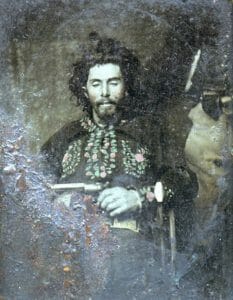
When Kansas opened to new settlement, with the Kansas-Nebraska Act and concept of “popular sovereignty” in place, conflict was nearly certain. Pro-slavery men, desperate to spread the practice (and avoid their state being surrounded on three sides by free states), flooded over the border from Missouri and brought slaves—and guns. Though Eastern abolitionists from the New England Emigrant Aid Society, led by Amos Lawrence (the city’s namesake), promoted anti-slavery settlement, at least initially the flood of Missourian “bushwhackers” into Kansas was stronger in numbers. As time went on, though, both sides realized that “free state” anti-slavery men would predominate among the wave of new settlers. Knowing this to be the case, the Missourian “border ruffians” tried to push through a pro-slavery territorial delegate to Congress and to enshrine a pro-slavery state constitution.
They used tactics that were legal, extralegal and even violent to win the early rounds of this political conflict. The Missourians simply hated the free staters, especially the devout abolitionists among them, whom they saw as sanctimonious Yankees unhinged by their love for blacks. The pro-slavery men had no qualms about taking up arms. One of their early leaders instructed the Missourians to “mark every scoundrel among you that is the least tainted with free-soilism, or abolitionism, and exterminate him.”
By the fall of 1855, the bona fide free state residents outnumbered the anti-slavery men. No matter, the Missourians created their own territorial legislature in Lecompton (standing in contrast to an unofficial free state legislature in Topeka) and sent five cannons and 1,500 men to lay siege to the free state stronghold of Lawrence. Though the territorial governor initially cooled tensions, months later the “posse” entered Lawrence and burned it to the ground. The “Sack of Lawrence” resonated eastward and inflamed passions on both sides. In the minds of Northern Republicans, the Pierce administration had proved itself impotent and unwilling to enforce the law or majority rule in the territory.
One loquacious senator, Charles Sumner of Massachusetts, made a two-day-long address titled “The Crime Against Kansas.” He excoriated the Pierce administration, the Missourians and his Southern colleagues who defended them. He named names and criticized individual congressmen. Two days later, Rep. Preston Brooks, the cousin of one of those Sumner had denounced, approached Sumner in the nearly empty Senate chamber and battered him over the head more than 30 times with a gold-headed cane. Southerners applauded! Braxton Bragg, a former Army officer (and future Confederate general), wrote that the House should vote a thanks to Brooks because “[Y]ou can reach the sensibilities of such dogs only through their heads and a big stick.” From all over the South, Brooks was sent notes of congratulation, along with dozens of new canes. His only real punishment was a $300 fine levied by a district court.
Sumner’s injuries were serious. His head was split open, and his injuries, along with mental wounds left by the beating, would keep him away from the Senate for most of the next four years. Even before the attack on the Senate floor, Republicans had taken to calling the war out West “Bleeding Kansas.” Now “Bleeding Sumner” joined the list of wrongs the Northerners counted against their Southern neighbors. The Congress was now, quite literally, divided into two (armed) camps as members took to carrying pistols to work.
After “Bleeding Sumner” and the “Sack of Lawrence,” the guerrilla war in Kansas escalated and the free staters struck back. Living in Kansas was John Brown, a 56-year-old radical abolitionist with 20 children, many guns and an Old Testament temperament. He declared that the time for passivity was over, that free staters must “fight fire with fire … and strike terror in the hearts of the pro-slavery people” and that “something must be done to show these barbarians that we, too, have rights.” Brown had a plan in mind.
Calculating that five free staters had thus far been murdered by the “bushwhackers,” he and four of his sons abducted five pro-slavery men (who had nothing to do with the murders) from their cabins near the Pottawatomie Creek and proceeded to split open their skulls with broadswords! It is hard, no matter how sympathetic his cause, not to compare John Brown and his followers—Bible in hand along with broadsword—with the ghastly showmanship of Islamic State’s executioners. Certainly, pro-slavery settlers saw Brown as a radical extremist.
Not everyone agreed, and the entire country divided on the case of Brown—who would be captured, tried and, on Dec. 2, 1859, hanged—and the “Bleeding Kansas” conflict. The famed Transcendentalist poet Ralph Waldo Emerson went so far as to say after Brown’s sentencing that he was “a saint, whose martyrdom will make the gallows as glorious as the cross.” The war didn’t end with Brown’s execution—not by a long shot. A guerrilla war that took hundreds of lives raged on and off for the next four years. In fact, once the Civil War began outright in 1861, the fighting would continue along the borders of Kansas and Missouri, until 1865, a decade’s worth of combat.
History, at least superficially, is alive in Lawrence. A customer can order John Brown ale from a local brewery or drink a cocktail at the John Brown Underground bar. University of Kansas students have been known to display images of John Brown holding an NCAA championship trophy instead of a Bible. Even the university mascot, the fabled Jayhawk, is a reference to the anti-slavery “jayhawker” guerrilla militia. Across the state line, University of Missouri sports fans can purchase T-shirts that say “Quantrill is my ‘homeboy,’ ” a reference to the Confederate bushwhacker leader responsible for the burning of Lawrence and execution of most of its male, anti-slavery population. As it recedes into history, the “Bleeding Kansas” or “Border War” issue that so inflamed the passions of an entire nation in the 1850s still resonates in this regional pocket of America, with the historical players often lightheartedly repurposed.
John Brown, a veritable hero in Lawrence, would leave his Kansas stomping grounds and bring his guerrilla war to a climax in Virginia. He always had millenarian, if fatalistic, aspirations. He, along with some of his sons and a few other supporters, seized the federal Army arsenal at Harpers Ferry, Va., where, under Brown’s scheme, he would distribute the weapons to foment a slave uprising up and down the East Coast. This was a crazy plan, more dream than reality—and of course it failed miserably. In the attempted seizure the local slaves did not revolt and the white townspeople violently turned on Brown’s band. Eight of his party (including two of his sons) were killed, and the survivors, including Brown, blockaded themselves in a thick-walled building to make a last stand. That night, a company of U.S. Marines led by two Army officers, Robert E. Lee and Jeb Stuart (both future Confederate generals), used battering rams to storm the building. Losing one of their own, the Marines killed two of the attackers and captured the rest, including a wounded John Brown.
It was as though Brown knew all along he would fail and die as a result. He seemed stoic before the court, stating, “If it is deemed necessary that I should forfeit my life for the furtherance of the ends of justice, and mingle my blood further with the blood of my children and with the blood of millions in this slave country whose rights are disregarded by wicked, cruel, and unjust enactments, I submit; so let it be done!” He was, of course, found guilty. As he was led to the gallows, Brown handed a scribbled note to a guard. It read, “I, John Brown, am now quite certain that the crimes of this guilty land can never be purged away but with blood.” He would be proved correct.
The Electoral ‘Revolution’ of 1860: Abraham Lincoln and the Coming of War
The nascent Republican Party was ever so young at the time of the presidential election of 1856. Its candidate, a famed Western adventurer named John C. Fremont, would lose to pro-Southern Pennsylvania Democrat James Buchanan. Americans voted largely according to the region in which they lived, and maps showing the results of the 1856 election foreshadowed the full sectional split to come. The rhetoric of the opposing sides had been extremely polarizing. Democratic papers published articles claiming that Fremont’s “ ‘Black Republicans’ ” would “turn loose … millions of negroes, to elbow you in the workshops, and compete with you in the fields of honest labor.” Another group of Democrats paraded girls in white dresses holding banners that read, “Fathers, save us from nigger husbands.”
It was a less than conclusive election, even though the electoral vote wasn’t very close. Fremont received 33 percent of the popular vote but carried all of New England and much of the Upper Midwest. The Republican Party was a non-factor in the South, sometimes not even appearing on the ballot. Nevertheless, Buchanan received 45 percent of the popular vote (the anti-immigrant “Know-Nothings” garnered 22 percent and split much of the middle states’ vote) but carried the South. When the “Know-Nothings” dissipated and the Republicans strengthened their party, it was certain the election of 1860 would be formative, perhaps even “revolutionary.” It was uncertain whether the union could hold.
In the 1860 campaign, the Deep South Democrats played the same game they had rolled out for 1856—arguing that (1) the “black” Republicans would unleash their slaves and a regime of misogyny; and (2) if Lincoln were elected the slave states would be “forced” to secede. This tactic had worked in 1856, scaring many Northern Democrats (and former Whigs) into supporting Buchanan. Then again, most Republicans didn’t take seriously the Southern threats of secession. They should have.
Something was profoundly different in 1860. The Southern Democrats once again overreached, insisting that the Democratic Party platform include a slave code for the western territories that would enshrine forever their right to expand slavery as an institution. When the Northern Democrats refused, the Southerners walked out and formed a new Southern Democratic Party, which nominated Vice President John C. Breckenridge of Kentucky as their presidential candidate. The Northern Democrats stuck with Illinois’ Stephen Douglas, and, in a desperate attempt to forestall crisis, old Whigs and conservatives in the upper South formed a constitutional Union Party (nominating John Bell of Tennessee), which took no stand on the slavery question and instead pleaded for caution and preservation of the union.
With the Democratic vote split three ways, it became a possibility that Lincoln could win by simply carrying the Northern states in a straight sectional vote. And indeed he would. He didn’t even appear on the ballot in the Deep South. Before Election Day, however, the Southern Democrats pounded the Republicans with propaganda and leveled threats of secession and racial revolution. Lincoln was elected by men who were Northern and white. The Republicans actually took pains to present themselves as the “White Man’s Party,” for it was they, they said, who wanted to exclude slavery—and by extension blacks—from their states and territories.
Thus, no matter how hard we try, it would be inappropriate to paint the 1860 election as one between civil rights Republicans and slave/segregation Democrats. What actually happened was this: An honest, incorruptible candidate (Lincoln), who was somewhat more progressive on race and slavery, won only 40 percent of the popular vote but carried an electoral majority by winning the entire North. The Southerners, then, acted the sore loser and seceded without even giving Lincoln a chance to govern. From their perspective, the three candidates who were more amenable to slavery had won a majority (60 percent) of the popular vote and thus Lincoln lacked a mandate. True enough, but he had won a constitutional majority, and, in the end, we must remember that it was the South that seceded, the South that insisted on the evacuation of federal military installations and, ultimately, the South that fired the first shots on their American brothers in Fort Sumter, S.C. By early 1861, it was clear: There would be war. John Brown had been right.
* * *
It is impossible to know if war could have been avoided. What seems certain is that there were many blunders committed on both sides, though more by the insecure, alarmist and chauvinistic South. Believing the “Yankees” would back down, the Southerners pushed and pushed and pushed again, wanting their cake and to eat it too. The call for a slave code, though, would prove to be a step too far.
In the 1850s, the functions of the federal government all became highly politicized and regional, crippling the bureaucracy and the sense of national union. By 1860, all three branches of government were seen as highly suspect. Congress became deadlocked on key votes between Northern and Southern factions that were increasingly fanatical; at times the armed parties nearly came (or did come) to blows on the floors of the House and Senate. Two weak presidents (Pierce and Buchanan) refused—despite their constitutional prerogative—to enforce federal law in Kansas. They folded to the South time and again, derelict in their duty. And, of course, the Supreme Court lost the trust of at least half of the population (the Northern half) when the Dred Scott decision made it appear tainted by partisanship.
As I write this in 2018, it is difficult not to feel a similar foreboding about our national divisions. If the 1850s teach us nothing else, it is that terrible things happen when the normal institutions of government grind to a halt—when tribally divided political factions bring the mechanisms of federal rule to a standstill.
* * *
To learn more about this topic, consider the following scholarly works: • James West Davidson, Brian DeLay, Christine Leigh Heyrman, Mark H. Lytle, and Michael B. Stoff, “Experience History: Interpreting America’s Past,” Chapter 15: “The Union Broken, 1850-1861” (2011). • Daniel Walker Howe, “What Hath God Wrought: The Transformation of America, 1815-1848” (2007).
Maj. Danny Sjursen, a regular contributor to Truthdig, is a U.S. Army officer and former history instructor at West Point. He served tours with reconnaissance units in Iraq and Afghanistan. He has written a memoir and critical analysis of the Iraq War, “Ghost Riders of Baghdad: Soldiers, Civilians, and the Myth of the Surge.” He lives with his wife and four sons in Lawrence, Kan. Follow him on Twitter at @SkepticalVet and check out his new podcast, “Fortress on a Hill,” co-hosted with fellow vet Chris “Henri” Henrikson.
The views expressed in this article are those of the author, expressed in an unofficial capacity, and do not reflect the official policy or position of the Department of the Army, Department of Defense, or the U.S. government.
Your support is crucial…With an uncertain future and a new administration casting doubt on press freedoms, the danger is clear: The truth is at risk.
Now is the time to give. Your tax-deductible support allows us to dig deeper, delivering fearless investigative reporting and analysis that exposes what’s really happening — without compromise.
Stand with our courageous journalists. Donate today to protect a free press, uphold democracy and unearth untold stories.


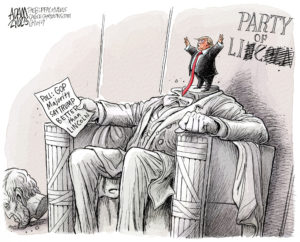

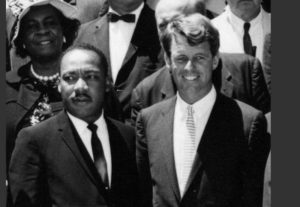
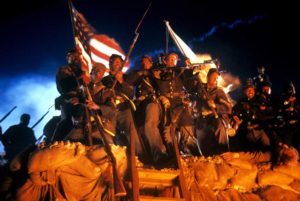
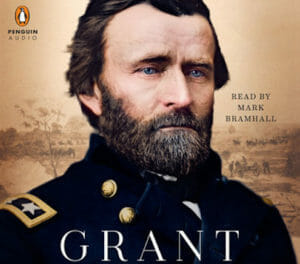


You need to be a supporter to comment.
There are currently no responses to this article.
Be the first to respond.